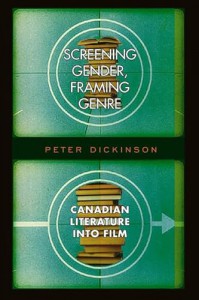On a related topic:
The History of German Literature on Film (2025)
Subject: Technique > Adaptation
Retelling Jane Austen (2024)
Essays on Recent Adaptations and Derivative Works
Dir. Tammy Powley and April Van Camp
Subject: Technique > Adaptation
Hemingway and Film (2024)
Reflections on Teaching, Reading, and Understanding
Dir. Cam Cobb and Marc K. Dudley
Subject: Technique > Adaptation
Silent Film Adaptations of Novels by British and American Women Writers, 1903-1929 (2024)
Viewer, I Married Him
Subject: Silent Cinema
Screening Gender, Framing Genre
Canadian Literature into Film


Average rating: ![]()
| 0 | rating | |
| 0 | rating | |
| 0 | rating | |
| 0 | rating |
Your rating: -
Book Presentation:
Audiences often measure the success of film adaptations by how faithfully they adhere to their original source material. However, fidelity criticism tells only part of the story of adaptation. For example, the changes made to literary sources in the course of creating their film treatments are often fascinating in terms of what they reveal about the different processes of genre recognition and gender identification in both media, as well as the social, cultural, and historical contexts governing their production and reception.
In Screening Gender, Framing Genre, Peter Dickinson examines the history and theory of films adapted from Canadian literature through the lens of gender studies. Unique in its discussion of a range of different adaptations, including films based on novels, plays, poetry, and Native orature, this study offers new and often provocative readings of works by such well-known Canadian authors as Margaret Atwood, Marie-Claire Blais, and Michael Ondaatje, and by such important Canadian filmmakers as Mireille Dansereau, Claude Jutra, Robert LePage, and Bruce McDonald. Drawing with equal facility from film and gender theory, and revealing a thorough knowledge of both literary and cinematic history, Dickinson has written a lively and engaging study that is sure to resonate with readers curious about the intersection of Canadian cultural production and broader issues of gender and national identity formation.